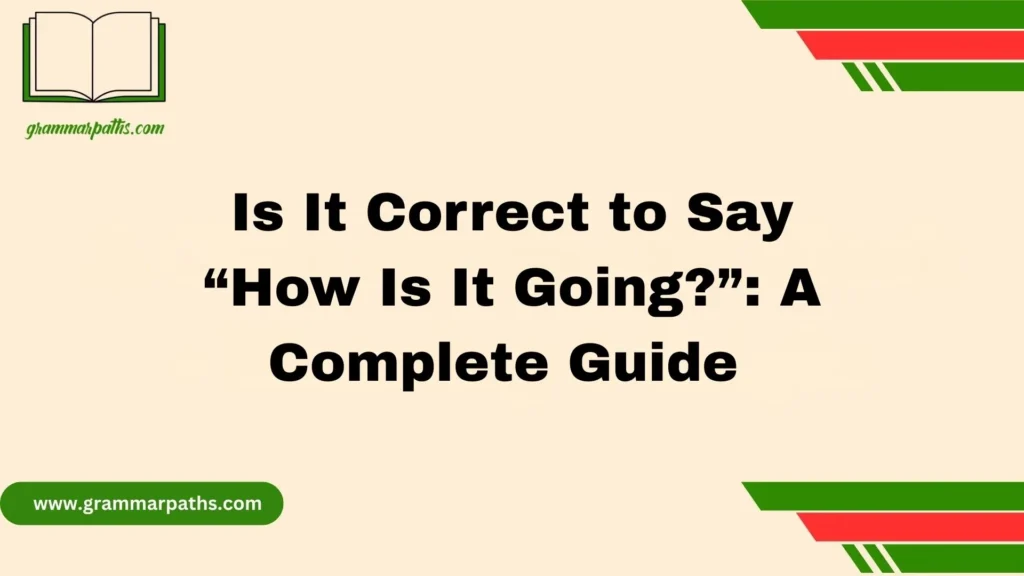In my years of teaching, I’ve seen how a single word or expression rooted in history can offer so much wisdom. That’s what makes the topic What Is a Verb Root? (with Examples) such a joy to explore—it blends the energy of grammar with the spirit of understanding. I once had someone who loved proverbs and could recite them verbatim, each one floating in the air like a proverbial gem.
Their knowledge of grammar didn’t come from memorising rules but from learning how verb forms were formed, how root meanings are accessible, and how enthusiasm for language shapes your style. It reminded me of Grimm’s Law, where sounds like “v” and “b” became interchangeable, showing how language relates across time. With hope, we shall continue to express ourselves meaningfully—despite those hot, wordy, or even verbose moments we all face.
Why Verb Roots Matter in English Grammar
Every verb in English, whether it’s “run,” “be,” or “understand,” starts from something more fundamental—its root. Think of the verb root as the raw DNA of a verb—it’s the base form that carries the essential meaning.
Why does this matter?
- All conjugations stem from the verb root.
- Prefixes and suffixes attach to roots to create new verb forms.
- Irregular verb patterns make more sense once you understand the root.
- Language learners who understand verb roots can learn faster and retain better.
“Mastering verb roots is like mastering the foundation of a language. If you know the root, you can build everything else.”
What Is a Verb Root? [With Clear Definition & Etymology]
A verb root is the most basic form of a verb—free of prefixes, suffixes, or inflections. It’s the part of the verb that holds the core meaning.
Example:
- Root: write
- Derived forms: writes, writing, written, rewriting
The verb root write remains constant while forms change depending on tense or aspect.
Key Characteristics of Verb Roots:
- No inflections (like -ed, -s, -ing)
- Carries the central idea of the verb
- Often identical to the base form, but not always
Etymology Insight
English verb roots often originate from:
- Germanic languages (e.g., run, come, make)
- Latin and Greek (especially in academic or formal vocabulary, e.g., construct, analyze)
How Verb Roots Function in Sentence Construction
The verb root is the backbone of verb construction. Every verb tense, mood, and aspect is built around it.
Here’s how it works:
| Verb Root | Present | Past | Present Participle | Past Participle |
| run | runs | ran | running | run |
| build | builds | built | building | built |
| write | writes | wrote | writing | written |
Function Breakdown:
- Tense: Tells when something happens
- Aspect: Shows whether the action is completed, ongoing, habitual
- Mood: Expresses attitude (e.g., commands, questions, wishes)
- Voice: Active vs passive
Without understanding the root, these layers become confusing. With it, they become logical.
How to Identify the Root of Any English Verb
Finding the verb root is easier than it seems, especially once you understand the pattern.
Step-by-Step Guide:
- Start with the dictionary form (infinitive without “to”)
- To eat → root: eat
- To eat → root: eat
- Strip away suffixes
- walking → walk
- rewriting → write (remove prefix too)
- walking → walk
- Handle irregular verbs carefully
- ran, running, ran → root: run
Common Tools:
- Online dictionaries like Merriam-Webster or Cambridge
- Morphology analyzers or grammar parsing tools
- Grammar books like Practical English Usage by Michael Swan
Verb Roots vs. Verb Stems: What’s the Difference?
People often confuse roots with stems, but there’s a subtle yet important distinction.
| Feature | Verb Root | Verb Stem |
| Definition | Base of a word | Base + affixes |
| Meaning | Core meaning | Ready for inflection |
| Example | write | rewrite |
Example:
- Write → Root
- Rewriting → Stem is rewrite (includes the prefix)
So, the root is the seed, and the stem is the sprout with some extra leaves but no fruit yet.
Regular Verbs and Their Root Behavior
Regular verbs follow predictable patterns when changing tense or form. Their roots remain intact across all forms.
Structure:
- Present → add -s for 3rd person
- Past → add -ed
- Present participle → add -ing
Examples:
| Root | Present | Past | -ing Form |
| walk | walks | walked | walking |
| play | plays | played | playing |
| cook | cooks | cooked | cooking |
Why Regular Verb Roots Are Easy:
- They’re consistent
- Great for beginners
- Make conjugation rules easy to memorize
Irregular Verbs and Root Changes
Now here’s where things get interesting. Irregular verbs don’t follow the usual rules, and often their roots change drastically.
Example:
- Root: go
- Forms: go, went, gone
There’s no visible root consistency, which is why they’re harder to learn.
Common Irregular Verbs Table:
| Root | Past Simple | Past Participle | -ing Form |
| go | went | gone | going |
| eat | ate | eaten | eating |
| take | took | taken | taking |
| swim | swam | swum | swimming |
| see | saw | seen | seeing |
Tip:
Group similar irregular verbs together:
- Sing, ring, drink all follow a vowel shift pattern: i → a → u
The Five Verb Forms in English and Their Root Connections
English verbs typically come in five forms, and each form is related to the verb root.
| Verb Form | Example (Root: write) |
| Base form | write |
| Past tense | wrote |
| Past participle | written |
| Present participle | writing |
| 3rd person singular | writes |
💬 “If you understand the root, forming these five structures becomes second nature.”
Verb Roots in Derived and Compound Words
Verb roots don’t just form standalone words. They also appear in:
1. Derived Words:
- read → reader, readable
- act → reaction, actor, inactive
2. Compound Words:
- break down, write-off, runway
In compound verbs, the root contributes to the meaning—but so does the added word.
| Compound Verb | Meaning |
| take over | gain control |
| break through | overcome a barrier |
| hold back | restrain |
Understanding the root helps you decode compound meanings even if the full verb is new to you.
Why Understanding Verb Roots Helps Language Learners
For language learners, verb roots are a shortcut to confidence and clarity.
Benefits:
- Improves spelling: You’ll know what parts never change.
- Boosts vocabulary: You’ll spot related words more easily.
- Strengthens grammar: Especially in forming tenses and voices.
- Speeds up learning: Once you get the root, the rest often falls into place.
Case Study: ESL Student – Maria from Brazil
Maria struggled with verb forms in her first year of English classes. Once her teacher explained the root system, everything changed.
“I realized writing, wrote, and written were just pieces of write. That made it so much easier.”
Her grades improved by 40% in one semester—all because of understanding verb roots.
Common Mistakes When Interpreting Verb Roots
Learning verb roots isn’t always smooth. Here are some common pitfalls:
Mistake #1: Thinking the Present Form is Always the Root
- Runs is not the root of run
Mistake #2: Ignoring Prefixes
- Replay → Root is play, not replay
Mistake #3: Confusing Past Forms
- Fell → root is fall, not fell
How to Avoid:
- Use dictionaries to confirm
- Practice spotting suffixes/prefixes
- Double-check irregular forms
Practice Section – Find the Verb Root
Try these! Find the verb root in each sentence:
- She was running to catch the train.
- The book was written by a famous author.
- He sang beautifully last night.
- They are disagreeing on the topic.
- We drove all night long.
Answer Key:
- run
- write
- sing
- agree
- drive
Final Thoughts: The Real Power of Knowing Your Verb Roots
Understanding the verb root is like unlocking the DNA of a verb—it holds the core meaning that gives rise to all its forms and uses. Whether you’re expressing ideas in writing or decoding complex grammar structures, mastering verb roots helps you build a stronger, more flexible command of language. From talk to talked to talking, the root stays steady, guiding how we communicate, learn, and grow in both native and foreign tongues. Once you grasp this concept, the structure of language becomes not just logical, but deeply intuitive.
FAQs – What Is a Verb Root? (with Examples)
1. What exactly is a verb root?
A verb root is the most basic form of a verb, without any endings or prefixes. For example, in the word “talking,” the verb root is “talk.” It’s the core part of the word that carries the main meaning.
2. How is a verb root different from a verb stem?
A verb root is the original base word, while a verb stem may include part of a prefix or suffix needed for conjugation. In some languages, the two are the same; in others, they differ slightly.
3. Why is it important to know verb roots?
Knowing verb roots helps with grammar, conjugation, and vocabulary building. It allows learners to understand how words are formed and recognize related words across different contexts.
4. Are all root words verbs?
No. A root can come from any part of speech—nouns, verbs, adjectives, etc. But in this context, we’re focusing only on verb roots.
5. Can one verb root create many different words?
Absolutely! For example, from the root “write” we get writer, rewriting, written, writes, and more. Understanding the root makes it easier to learn and remember these variations.
6. Do verb roots exist in all languages?
Yes, most languages have some concept of root words, especially in inflected or conjugated languages. The rules and structures might differ, but the principle remains the same.
Additional Resources
Here are some resources to deepen your understanding of verb roots:
- Merriam-Webster’s Root Word Definitions
- Cambridge Dictionary: Grammar Reference
- 100 Irregular Verbs List – Grammarly

Emma Brooke is a passionate language expert and contributor at GrammarPaths.com, where she helps learners navigate the complexities of English grammar, idioms, and effective writing. With a strong academic background and years of teaching experience, Emma excels at turning tricky grammar rules into simple, practical lessons that readers can easily grasp.












